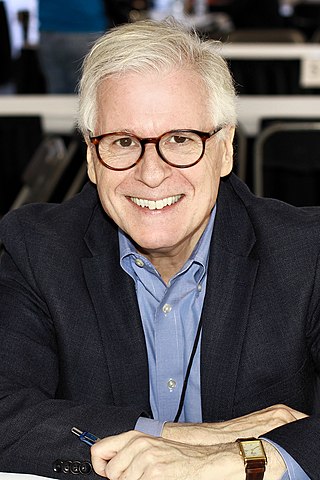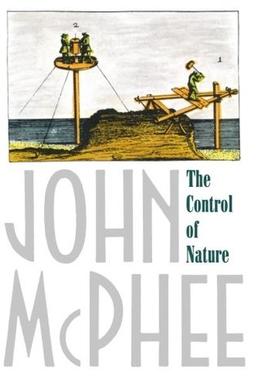
Presidential elections were held in the United States on November 8, 1988. The Republican Party's ticket of incumbent Vice President George H. W. Bush and Indiana senator Dan Quayle defeated the Democratic ticket of Massachusetts Governor Michael Dukakis and Texas senator Lloyd Bentsen.

The Pulitzer Prize for Criticism has been presented since 1970 to a newspaper writer in the United States who has demonstrated 'distinguished criticism'. Recipients of the award are chosen by an independent board and officially administered by Columbia University. The Pulitzer Committee issues an official citation explaining the reasons for the award.

Harvey LeRoy "Lee" Atwater was an American political consultant and strategist for the Republican Party. He was an adviser to Republican U.S. presidents Ronald Reagan and George H. W. Bush and chairman of the Republican National Committee. Atwater aroused controversy through his aggressive campaign tactics, especially the Southern strategy.

Joan Didion was an American writer and journalist. She is considered one of the pioneers of New Journalism, along with Gay Talese, Truman Capote, Norman Mailer, Hunter S. Thompson, and Tom Wolfe.

The Devil's Dictionary is a satirical dictionary written by American journalist Ambrose Bierce, consisting of common words followed by humorous and satirical definitions. The lexicon was written over three decades as a series of installments for magazines and newspapers. Bierce's witty definitions were imitated and plagiarized for years before he gathered them into books, first as The Cynic's Word Book in 1906 and then in a more complete version as The Devil's Dictionary in 1911.

Jonathan Edward Schell was an American author and visiting fellow at Yale University, whose work primarily dealt with campaigning against nuclear weapons.

Ian Buruma is a Dutch writer and editor who lives and works in the United States. In 2017, he became editor of The New York Review of Books, but left the position in September 2018.
Arthur Edmund Morris was an American-South African writer, known for his biographies of U.S. Presidents. His 1979 book The Rise of Theodore Roosevelt won the Pulitzer Prize for Biography or Autobiography and was the first of a trilogy of books on Roosevelt. However, Morris sparked controversy with his 1999 book, Dutch: A Memoir of Ronald Reagan, due to its extensive use of fictional elements.

Slouching Towards Bethlehem is a 1968 collection of essays by Joan Didion that mainly describes her experiences in California during the 1960s. It takes its title from the poem "The Second Coming" by W. B. Yeats. The contents of this book are reprinted in Didion's We Tell Ourselves Stories in Order to Live: Collected Nonfiction (2006).

The Fire Next Time is a 1963 non-fiction book by James Baldwin, containing two essays: "My Dungeon Shook: Letter to my Nephew on the One Hundredth Anniversary of the Emancipation" and "Down at the Cross: Letter from a Region of My Mind".

Rick Perlstein is an American historian and journalist who has garnered recognition for his chronicles of the post-1960s American conservative movement. The author of five bestselling books, Perlstein received the 2001 Los Angeles Times Book Prize for History for his first book, Before the Storm: Barry Goldwater and the Unmaking of the American Consensus. Politico has dubbed him "a chronicler extraordinaire of modern conservatism."

Thomas Mallon is an American novelist, essayist, and critic. His novels are renowned for their attention to historical detail and context and for the author's crisp wit and interest in the "bystanders" to larger historical events. He is the author of ten books of fiction, including Henry and Clara, Two Moons, Dewey Defeats Truman, Aurora 7, Bandbox, Fellow Travelers, Watergate, Finale, Landfall, and most recently Up With the Sun. He has also published nonfiction on plagiarism, diaries, letters and the Kennedy assassination, as well as two volumes of essays.

Benjamin S. Lerner is an American poet, novelist, essayist, and critic. The recipient of fellowships from the Fulbright, Guggenheim, and MacArthur Foundations, Lerner has been a finalist for the National Book Award for Poetry, the National Book Critics Circle Award in fiction, and the Pulitzer Prize for Fiction, among many other honors. Lerner teaches at Brooklyn College, where he was named a Distinguished Professor of English in 2016.
Wanda Coleman was an American poet. She was known as "the L.A. Blueswoman" and "the unofficial poet laureate of Los Angeles".

Political Fictions is a 2001 book of essays by Joan Didion on the American political process.

The Control of Nature is a 1989 nonfiction book by John McPhee that chronicles three attempts to control natural processes that had varying success. The book combines three long essays previously published in The New Yorker: "Atchafalaya", "Cooling the Lava", and "Los Angeles Against the Mountains". These respectively describe the Old River Control Structure regulating inflow to the Atchafalaya River; the Eldfell volcanic eruption of 1973; and debris flow from the San Gabriel Mountains.
Esther McCoy was an American author and architectural historian who was instrumental in bringing the modern architecture of California to the attention of the world.

"Raising Kane" is a 1971 book-length essay by American film critic Pauline Kael, in which she revived controversy over the authorship of the screenplay for the 1941 film Citizen Kane. Kael celebrated screenwriter Herman J. Mankiewicz, first-credited co-author of the screenplay, and questioned the contributions of Orson Welles, who co-wrote, produced and directed the film, and performed the lead role. The 50,000-word essay was written for The Citizen Kane Book (1971), as an extended introduction to the shooting script by Mankiewicz and Welles. It first appeared in February 1971 in two consecutive issues of The New Yorker magazine. In the ensuing controversy, Welles was defended by colleagues, critics, biographers and scholars, but his reputation was damaged by its charges. The essay and Kael's assertions were later questioned after Welles's contributions to the screenplay were documented.

Let Me Tell You What I Mean is a collection of essays by Joan Didion published on January 26, 2021. It was her last published book before her death on December 23, 2021. The book includes 12 essays, written between 1968 and 2000, and a foreword by critic Hilton Als. Like many of Didion's previous essay collections, the pieces in the book represent a mixture of reporting, memoir and criticism.

At the Same Time: Essays and Speeches is a nonfiction book by Susan Sontag published in 2007 by Farrar, Straus and Giroux. Sontag's first posthumously published book, it was edited by her friend Paolo Dilonardo and her assistant Anne Jump and features a foreword by her son David Rieff. At the Same Time includes pieces on literature, language and politics, as well as five speeches and lectures given by Sontag towards the end of her life.

















